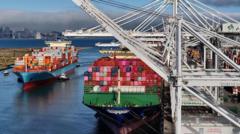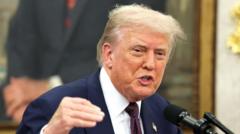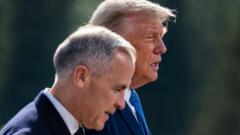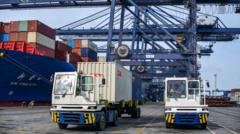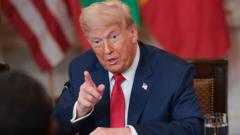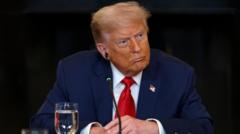The Sinaloa Cartel, a formidable player in the global drug trade, is currently grappling with significant upheaval due to internal discord and heightened governmental scrutiny.
The Struggles of the Sinaloa Cartel: A Looming Crisis

The Struggles of the Sinaloa Cartel: A Looming Crisis
Exploring the internal conflicts and external pressures facing one of the most notorious drug syndicates in the world.
The Sinaloa Cartel, known for its dominance in the production and trafficking of fentanyl and other illicit drugs, is encountering its most turbulent phase amid a joint crackdown by the U.S. and Mexican governments. The emergence of an internal conflict, instigated by a betrayal within the cartel itself, has led to severe financial and organizational strain, raising questions about its future survival.
As one of the largest criminal enterprises globally, the Sinaloa Cartel has long been at the forefront of drug trafficking, particularly noted for its pivotal role in the fentanyl crisis affecting the United States. Recent developments, however, indicate a significant destabilization that could redefine its operations.
Critical Points of Discussion:
1. **Nature of the Cartel:** The Sinaloa Cartel has been pivotal in the illicit drug trade, significantly impacting U.S. public health through its fentanyl production.
2. **Origins of Internal Conflict:** The latest turmoil within the cartel has been attributed to betrayals among high-ranking members, which threatens its hierarchical structure.
3. **Rival Cartels:** The cartel now faces competition from emerging rivals seeking to capitalize on its vulnerabilities during this period of distress.
4. **Government Responses:** Both the Mexican and U.S. governments are ramping up efforts to dismantle the cartel, leveraging intelligence and law enforcement operations.
5. **Current Power Dynamics:** Assessments suggest that the cartel's internal fractures may be paving the way for rival factions to gain the upper hand.
The prospect of the Sinaloa Cartel's decline raises critical implications not only for the drug trade but also for regional stability in Mexico and beyond, making it a focal point of analysis for both law enforcement and policymakers.
As one of the largest criminal enterprises globally, the Sinaloa Cartel has long been at the forefront of drug trafficking, particularly noted for its pivotal role in the fentanyl crisis affecting the United States. Recent developments, however, indicate a significant destabilization that could redefine its operations.
Critical Points of Discussion:
1. **Nature of the Cartel:** The Sinaloa Cartel has been pivotal in the illicit drug trade, significantly impacting U.S. public health through its fentanyl production.
2. **Origins of Internal Conflict:** The latest turmoil within the cartel has been attributed to betrayals among high-ranking members, which threatens its hierarchical structure.
3. **Rival Cartels:** The cartel now faces competition from emerging rivals seeking to capitalize on its vulnerabilities during this period of distress.
4. **Government Responses:** Both the Mexican and U.S. governments are ramping up efforts to dismantle the cartel, leveraging intelligence and law enforcement operations.
5. **Current Power Dynamics:** Assessments suggest that the cartel's internal fractures may be paving the way for rival factions to gain the upper hand.
The prospect of the Sinaloa Cartel's decline raises critical implications not only for the drug trade but also for regional stability in Mexico and beyond, making it a focal point of analysis for both law enforcement and policymakers.




